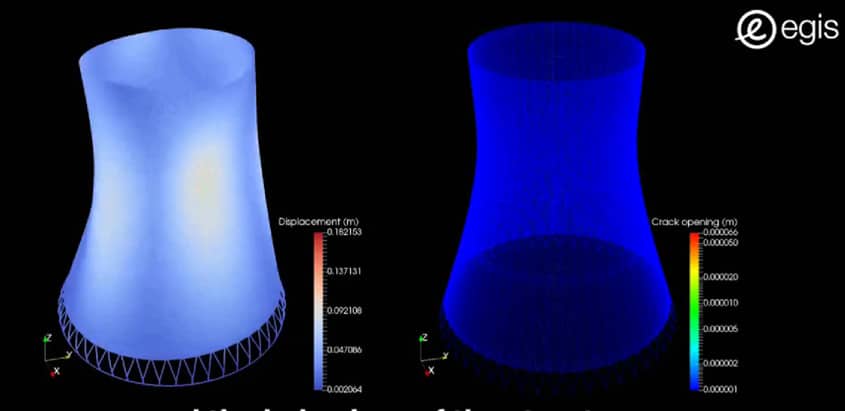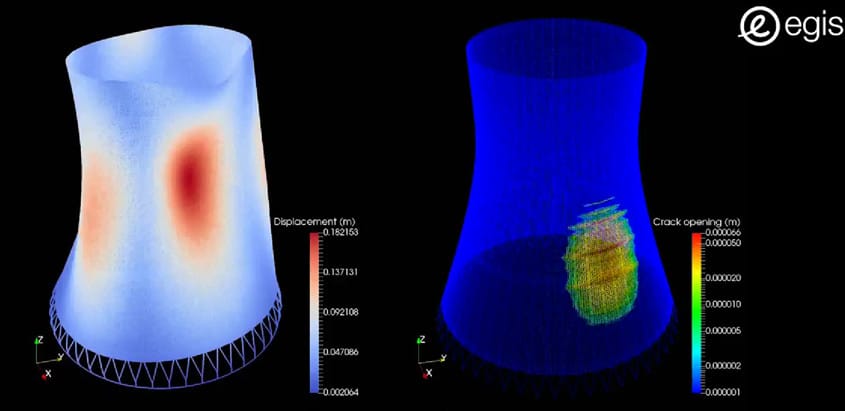Extending the service life of existing nuclear power plants is a low-carbon solution to today’s energy challenges. In this context, it is crucial to assess the structural strength of power plants by accurately modeling the mechanical phenomena of reinforced concrete. There are two key aspects to the extension of their lifespan: the state of cracking of reinforced concrete and the behavior of the structure in response to earthquakes.
Egis, in partnership with industrial and academic research laboratories, has developed a digital twin of the mechanical structure, enabling the most accurate possible detailed analysis of the influence of these physical phenomena on the existing civil engineering structure.
This numerical twin uses a multi-scale analytical method to describe the evolution of cracks, concrete, concrete damage, rebar delamination and relative slippage between concrete and rebar. This solution reproduces, at the global scale of the structure, the impact and evolution of local mechanical phenomena in reinforced concrete. What’s more, this digital twin can be enhanced with real-time measurements to simulate the impact of observed phenomena on the actual building and predict the evolution of the structure’s state.

